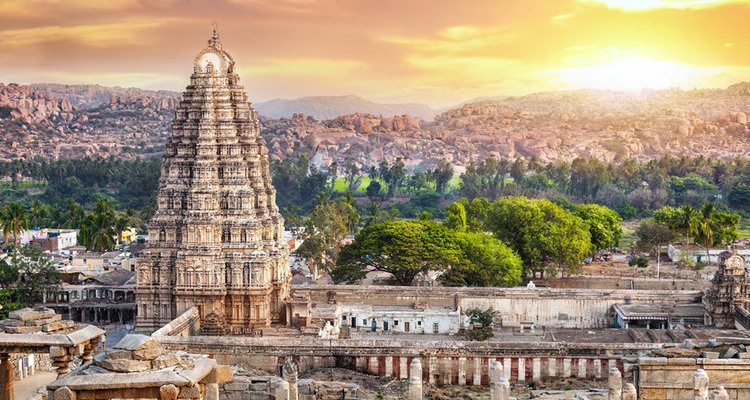Vijayanagar Empire: Know it s history, architecture and administration
The Vijayanagar Empire
The Vijayanagar Empire often called Karnata Empire and also the Kingdom of Bisnegar is situated in the Deccan Plateau in South India. The empire is a symbol displaying the culmination of attempts by the Southern powers to remove the Islamic invasions by the 13th century. This empire was established in 1336. Harihara I and his brother, Baku Raya I of Sangama Dynasty were the ones who established it. The ruins of this empire can be found in present-day Hampi in Karnataka. It was an extremely powerful and wealthy empire at that time.
Read more: GKDose: Important International Summits and Visits in 2019
Read more: All you need to know about the Non-Cooperation Movement- History Notes

The Art and Culture of the Vijayanagar Empire
1.Dravida Style– The Vijayanagar rulers had a very interesting activity of temple building. Here, they produce a new style called the Vijayanagar Style which is often called as Dravida Style. The very distinct feature of this empire is a unique style and design of pillars and sculptures.
2. The temple has a Mandapam, an elevated space i.e. an open pavilion. It is meant for the seating of the deity. The Kalyana Mandapam has one of the elaborately carved pillars.
3. Hampi has the most beautiful and creative styles. The Vitthalaswamy and the Hazara Ramaswamy temples are the best instances of art in Vijaynagar.
4. The Garbhagriha – The central part of the temples at Vijaynagar temples is called the Garbhagriha. This is a cell where the presiding deity was installed.
5. The Amman Shrine is the consort of God.
7. Dance – Bharatanatyam was highly promoted in the Vijayanagar Empire. Drama Yakshagana was a popular dance drama.
8. Paintings – The Ramayana Theme walls along with Tlahabharta can be found on the walls.
9. Sculpture – This period has witnessed the largest number of sculptures.
Administration at Vijayanagar Empire
Vijayanagar was one of the most administered empires of India. It lasted for 200 years and is perhaps known for its well-managed administration.
The Empire was under the Kingship of Krishnadev Raya. He believed that a crowned king should always rule with an eye towards Dharma. He was often treated as God’s representative on earth. The kind was assisted and guided by the minister that he appoints from the three classes – the Brahmans, the Kshatriyas and the Vaishyas.
The empire had 6 provinces for administrative purposes. Each providence was called Print or Rajya that was given under viceroy or Nayak, the leaders. These leaders were often the members of the royal family or Nobel members of society. They were required to administer the income and expenditure to the center.
The Fall of Vijayanagar Empire
Since 1336, the Vijayanagar Empire extended to the whole of south covering the Deccan Plateau including Trichinopally, Mysore, Kanara, Chingalpet and Kanchivaram.
The Empire always remained at war with the Delhi Sultanate and the Bahamani Dynasty. This region was ruled by four dynasties including the Sangama Dynasty, Saluva Dynasty, Tuluva Dynasty and Aravidu Dynasty. The empire lasted until 1646, though its powers remained declining. In 1565, military was defeated in the battle of Talikota.
For more such informative articles stay tuned to OWN TV.
